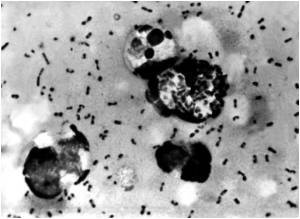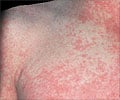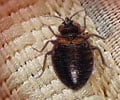It is said that a healthy human intestine is colonized with over 100 trillion beneficial, or commensal, bacteria of many different species.

In earlier work, researchers from the Perelman School of Medicine at the University of Pennsylvania found that barrier surfaces -- the skin, gut, lung – are guarded by immune cells and limit the inner body's exposure to viruses, bacteria, and parasites, as well as allergens and pollutants. But, how immune cells play a role in limiting the location of commensal bacteria to intestinal and other barrier sites remains unclear.
Now, David Artis, PhD, associate professor of Microbiology, and Gregory F. Sonnenberg, PhD, a postdoctoral researcher in the Artis lab, have identified that immune cells, called innate lymphoid cells, are resident in the intestinal tissues of healthy humans, mice, and non-human primates, and are critical in limiting the location of commensal bacteria. If the innate lymphoid cells are depleted in mice, commensal bacteria move to peripheral tissues and promote inflammation. The research appears this week in Science.
Remarkably, the commensal bacteria that were found in peripheral tissues were all members of a group called Alcaligenes, indicating that the immune system may have developed highly selective pathways to regulate containment of different groups of commensal bacteria.
"A fundamental question that has puzzled researchers for many years is how did the human body evolve to accommodate all these commensal bacteria and keep them in their correct locations?," asks Artis. "The indication from these studies is that the body may have many different pathways to limit the spread of commensal bacteria and these pathways may be tailored to specific types of bacteria."
Supporting experiments in animal models, Alcaligenes-specific immune responses were associated with patients with Crohn's disease or progressive hepatitis C virus infection, two debilitating human diseases linked to the spread of commensal bacteria to systemic tissues.
Advertisement
Innate immune cells may become impaired in chronic human diseases, resulting in the spread of Alcaligenes bacteria and pathologic inflammation, which may represent a novel pathway to target in human disease, say the investigators.
Advertisement
Source-Eurekalert













